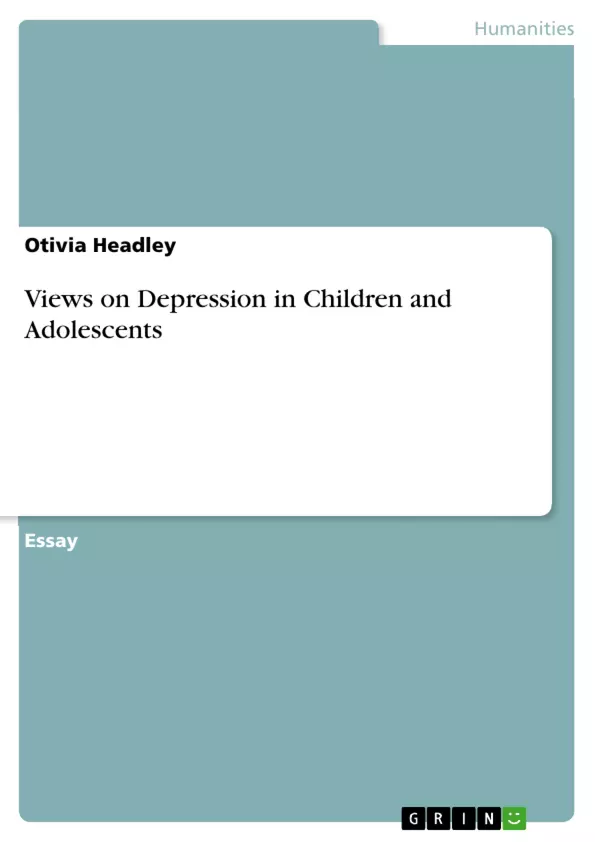As human beings we all feel ‘down’ from time to time, we all have time periods where we get sad or feel blue. When those sad or down times begin to exceed a certain time frame or start to take over an individual's life and every day functions it may be due to depression.
Depression comes in many different forms: some depressed people do not feel sad at all but instead feel lifeless, empty, and apathetic, or men in particular may even feel angry, aggressive and restless. Whatever the symptoms, depression interferes with the ability to work, study, eat, and have fun, leaving the depressed individual with feelings of helplessness, hopelessness and worth-lessness with little or no relief.
This essay surveys different academic views on depression in children and adolescents in order to provide an informational overview.
Inhaltsverzeichnis (Table of Contents)
- Depression in Children and Adolescents
- Cultural Factors
- Minority and Low-Income Populations
- Prevalence and Intervention
- Interpersonal Psychotherapy (IPT)
- CURB (Chicago Urban Resiliency Building)
- Social and Coping Skills Enhancement
Zielsetzung und Themenschwerpunkte (Objectives and Key Themes)
This paper examines the prevalence, causes, and potential interventions for depression in children and adolescents. The author explores various perspectives on the topic, highlighting the role of cultural, social, and interpersonal factors.
- The Prevalence of Depression in Children and Adolescents
- The Influence of Culture on Depression
- The Importance of Early Intervention
- The Role of Social and Coping Skills in Depression
- The Effectiveness of Different Intervention Approaches
Zusammenfassung der Kapitel (Chapter Summaries)
The paper starts by defining depression and outlining its impact on individuals, particularly in terms of their ability to function in daily life. It then delves into the connection between depression and gender, exploring the reasons why girls may be more susceptible to depression during adolescence. The author goes on to discuss the role of culture in depression, highlighting the disparities in depression rates and access to mental health services among different ethnic groups.
Further, the paper examines various intervention approaches for depression in youth, including Interpersonal Psychotherapy (IPT), the culturally adapted CURB program, and the enhancement of social and coping skills. It presents evidence supporting the effectiveness of each approach, while also acknowledging the need for a multifaceted approach to address the complex nature of depression.
Schlüsselwörter (Keywords)
The paper focuses on the key concepts of depression, intervention, culture, gender, and social skills. It explores the prevalence of depression in children and adolescents, the influence of cultural factors, and the effectiveness of different intervention approaches, particularly those targeting social and coping skills.
- Quote paper
- LMSW Otivia Headley (Author), 2013, Views on Depression in Children and Adolescents, Munich, GRIN Verlag, https://www.grin.com/document/345092



